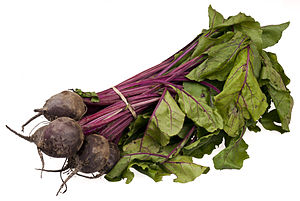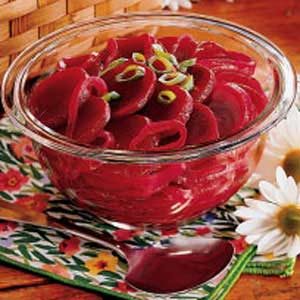There were beets in the box this week. Quite a few, actually. Awesome!
Beets are really good for you. They're a great source of folate and manganese. In spite of their nutritional value, they taste really good too.
But there were an astonishing number of beets in my box. Scratching my head on what to do with it, I noticed that my son had just emptied a couple of pint jars of our fruit butter. So I decided to make pickled beets.
Pickled beets when I was growing up were, well, boring. Yeah, they turned things purple, but it didn't really taste like much. Fortunately, experimenting with my canning recipes, I found out that pickled beets can be very not boring. A couple of added favors and... wow, what a difference.
First, the boring version. Boil the beets for around 20 minutes, until they're a little tender but still have snap. Once they cool enough to handle, rub with a paper towel to take off the skin. (I wear latex gloves so as to minimize staining my fingers. It's also a
very good idea to do this over the sink and not over your beautiful walnut cutting board. Just sayin'.)
Cut the beets into either disks or bite-sized chunks, and fill your sterilized jars. Cover with a simple brine (equal parts cider vinegar and water, with about a tablespoon of pickling salt per pint of liquid). The beets should be completely covered under the liquid, and you should leave about 1/4" head space in the jar. Process in a water bath for 25 minutes.
But, here's the kicker. Add some additional flavoring to your brine. Here are some combinations that I've had success with:
- Pickling spice
- Cinnamon, clove and allspice
- Honey and star anise (Here's the thing. For some dumb reason, I bought a huge bag of star anise from Penzey's. Why? No clue. But I've been experimenting putting it in everything just to not waste it. Found some winners, like this one, and some not-so-winners. P.S. Want some anise? Happy to give you some...!)
- Mustard seed, a bit of red pepper flakes, and sliced onions
- Cumin and curry powder
- Keep it simple with just a bit of sugar
If you've got a favorite recipe for pickled beets, or a favorite way to use them, please feel free to comment!

















